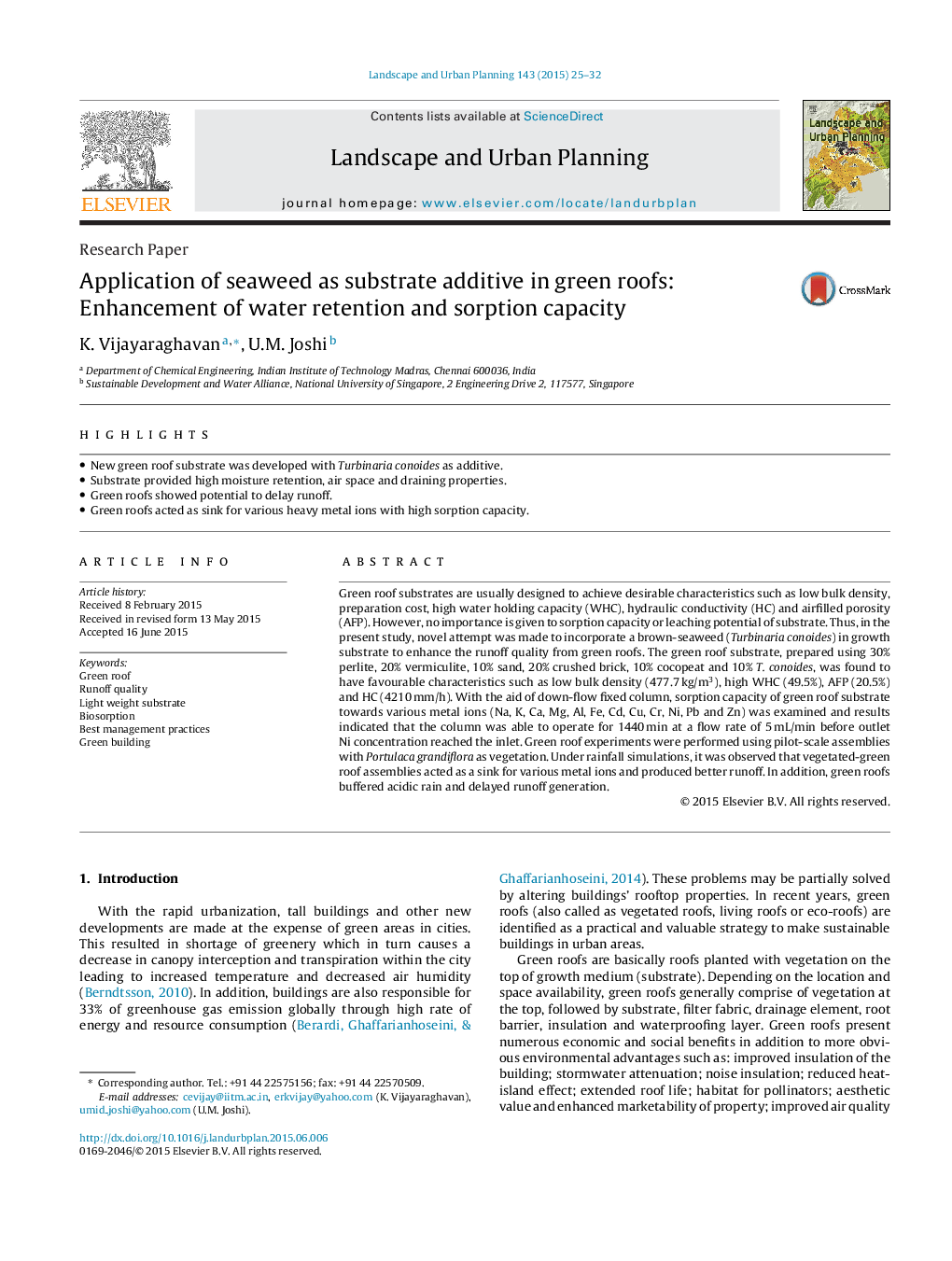| Article ID | Journal | Published Year | Pages | File Type |
|---|---|---|---|---|
| 7460958 | Landscape and Urban Planning | 2015 | 8 Pages |
Abstract
Green roof substrates are usually designed to achieve desirable characteristics such as low bulk density, preparation cost, high water holding capacity (WHC), hydraulic conductivity (HC) and airfilled porosity (AFP). However, no importance is given to sorption capacity or leaching potential of substrate. Thus, in the present study, novel attempt was made to incorporate a brown-seaweed (Turbinaria conoides) in growth substrate to enhance the runoff quality from green roofs. The green roof substrate, prepared using 30% perlite, 20% vermiculite, 10% sand, 20% crushed brick, 10% cocopeat and 10% T. conoides, was found to have favourable characteristics such as low bulk density (477.7Â kg/m3), high WHC (49.5%), AFP (20.5%) and HC (4210Â mm/h). With the aid of down-flow fixed column, sorption capacity of green roof substrate towards various metal ions (Na, K, Ca, Mg, Al, Fe, Cd, Cu, Cr, Ni, Pb and Zn) was examined and results indicated that the column was able to operate for 1440Â min at a flow rate of 5Â mL/min before outlet Ni concentration reached the inlet. Green roof experiments were performed using pilot-scale assemblies with Portulaca grandiflora as vegetation. Under rainfall simulations, it was observed that vegetated-green roof assemblies acted as a sink for various metal ions and produced better runoff. In addition, green roofs buffered acidic rain and delayed runoff generation.
Related Topics
Life Sciences
Agricultural and Biological Sciences
Ecology, Evolution, Behavior and Systematics
Authors
K. Vijayaraghavan, U.M. Joshi,
